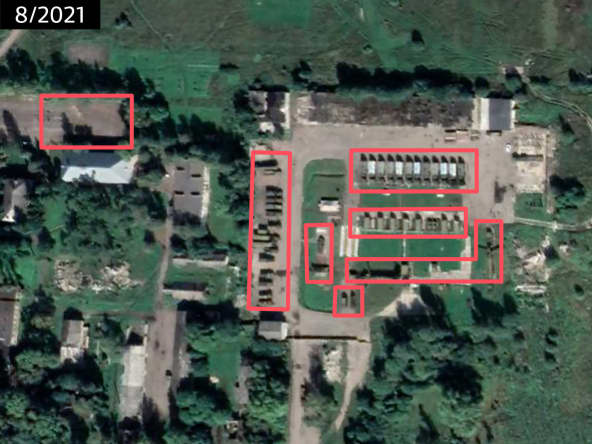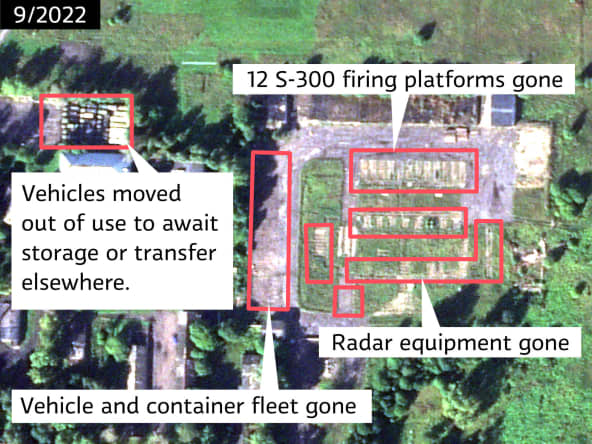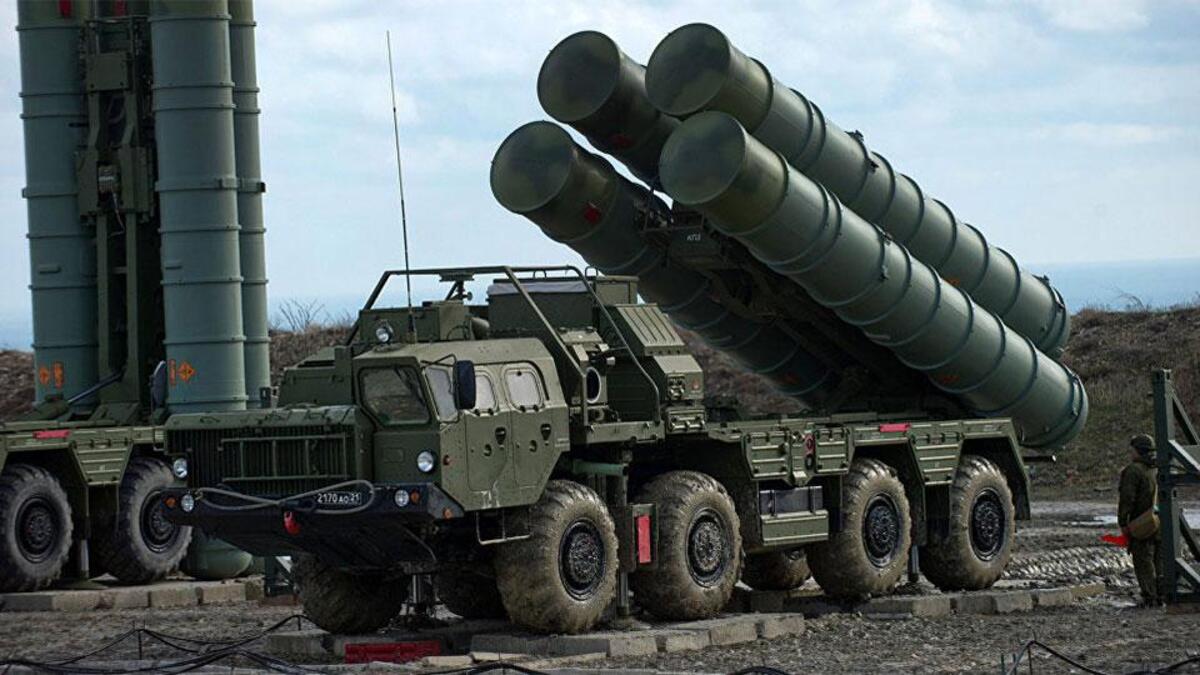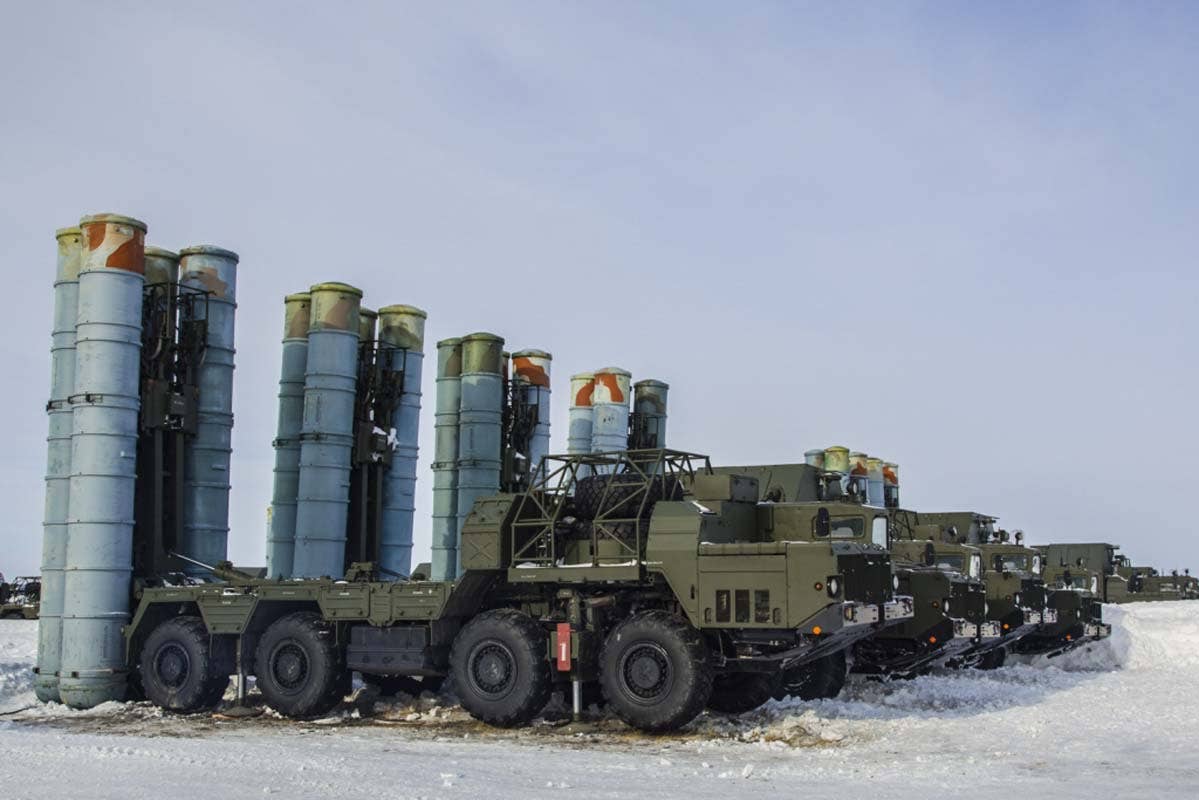Russia appears to be moving a large number of anti-aircraft missiles from its second biggest city, St. Petersburg, as per the recent satellite imagery of the city and analysis by a military expert.
‘Dragon From The East’ – Pakistan Gets 2nd Batch Of ‘Rafale Challenger’ J-10C Fighters From China – Local Media
S-400 “Crippler” — How Did Ukraine Integrate ‘Incompatible’ AGM-88 Anti-Radiation Missiles With MiG-29 Fighters?
A Finnish media outlet, Yle, published satellite images of the anti-aircraft missile bases around St. Petersburg, revealing that both mobile firing platforms and missiles had disappeared in recent months.
A total of 14 anti-aircraft missile batteries surround the city, out of which four anti-aircraft bases have been emptied, according to military expert Maj. (Ret.) Marko Eklund who analyzed the satellite images for Yle.
These 14 batteries comprise more than 100 mobile firing platforms, each having four-ready to-fire missiles, which means a total of around 450 missiles, at least.
“Based on the pictures, four anti-aircraft bases have been emptied of equipment,” said Eklund, who has more than 20 years of experience in monitoring the Russian armed forces.
The most apparent change has been observed to the southwest of St. Petersburg, where two entire batteries, out of the four operated by the 500th Anti-Aircraft Missile Regiment, have been emptied, as per the satellite imagery from early September.


Furthermore, around 25 missile containers, possibly containing 100 missiles, have been removed from one of the regiment’s two remaining batteries.
Apart from that, missiles containers at a base belonging to the 1489th Anti-Aircraft Missile Regiment located east of St. St Petersburg, close to the shore of Lake Ladoga, were also loaded onto transport platforms in May, as per the observations made by Eklund.
Around 120 missiles could have been removed from this facility in the missile containers.
Additionally, a significant transfer of equipment has also been observed from a base belonging to the 1490th anti-aircraft missile regiment, located near the village of Kungolovo, to the southeast of St. Petersburg.
It is possible that more equipment might have been removed from the St Petersburg region, but nothing can be said for sure because of the lack of usable recent satellite images of all the batteries.

Anti-Aircraft Missiles Removed
Most of the remaining anti-aircraft missiles in the St. Petersburg region are from the S-400 missile system, reported Yle.
“It is most likely that the equipment that has been removed is primarily from the old S-300 system,” said Eklund.

First introduced in the late 1970s, the S-300s have become somewhat obsolete, especially considering the range of the new S-400. According to Eklund, the weakening of missile defenses around St. Petersburg is because of Russia’s requirement for missiles in its war on Ukraine.
Before the transfer of anti-aircraft missiles from St. Petersburg, Eklund observed the movement of missiles to the front from bases located closer to Ukraine and from regions regarded as less important than St. Petersburg.
For example, half of the missile fleet at an anti-aircraft missile base in Voronezh, central Russia, disappeared by May, according to Eklund.
Russia Is Using S-300 Missiles To Hit Ukraine
The anti-aircraft missiles of the old S-300 system are being retired, and probably Russian may have decided to use them in Ukraine, as there have been reports of the Russian military running out of precision-guided missiles.
“These old missiles are used for ground targets in such a way that the greatest damage seems to be done to civilians,” Eklund said.
There have been reports of the Russian military using the S-300 surface-to-air missiles (SAM) to attack land targets in the Mykolaiv region of Ukraine.
The Governor of the Mykolaiv Oblast, Vitaly Kim, said on his Twitter handle on July 8 that Russian forces were using repurposed S-300 missiles equipped with GPS navigators to hit ground targets.
Mykolayiv. 10:50 AM, July 8
That rocket attacks have become more frequent. The orcs are remaking S-300 missiles, there have many if them, they put GPS on them to shoot at the ground, it is not accurate because of this. And they shoot 12 rockets each. pic.twitter.com/wpcNby1YIH
— Віталій Кім / Vitaliy Kim (@vitalij_kim) July 8, 2022
The capability to hit stationary ground targets was first incorporated in the S-300 in 1979, one year after it entered the service with the Soviet Air Defence Force. As per a previous EurAsian Times report, the maximum engagement range of the system against ground targets is 120 kilometers.
For most of their flight path toward the target, the S-300 missiles rely on the onboard inertial system that uses the target’s coordinates before the missile launch and is updated during the flight via a radio link. In contrast, the missile uses semi-active radar homing in the terminal phase.
“Russia considers the S300 an older, less capable SAM system now that the S400 has been fielded. That said, Russia most likely has a larger number of S300 missiles in their inventory, costs less, and can be used to target areas versus point targets,” Colonel (Retd.) David Shank, Former US Army Air Defense Artillery School Commander, previously told EurAsian Times.
Shank added that the Russian military could “run low on precision-guided surface-to-surface munitions, and therefore integrate the S300 missile against area targets that seem more vulnerable.”
The Russian military has been known to conduct exercises for practicing the use of the S-300 system to strike stationary ground targets. Apart from that, the ability to destroy ground targets is said to be retained even in the S-400 air defense system.
- Contact the author at tanmaykadam700@gmail.com
- Follow EurAsian Times on Google News




